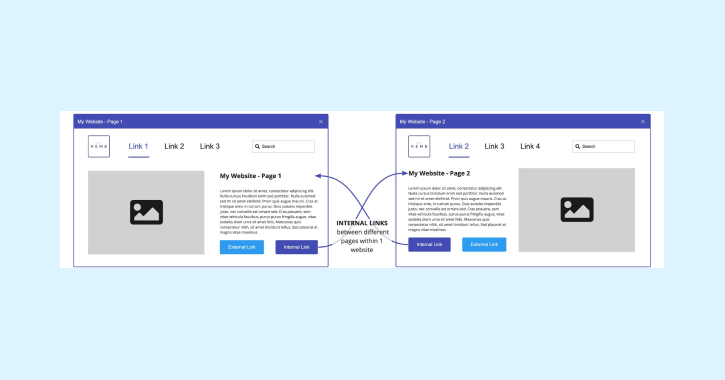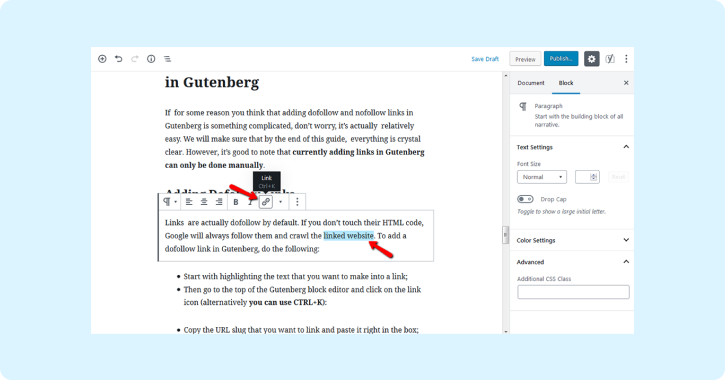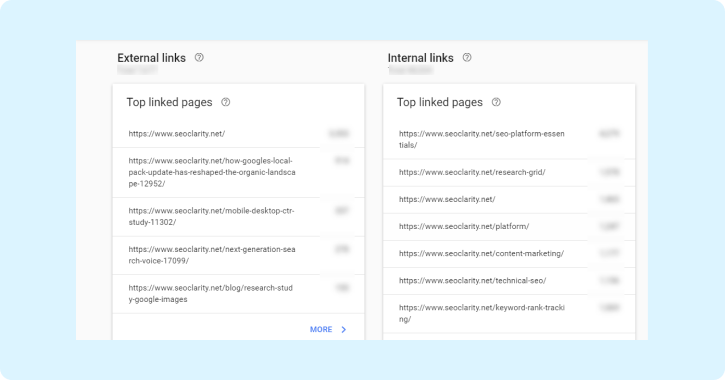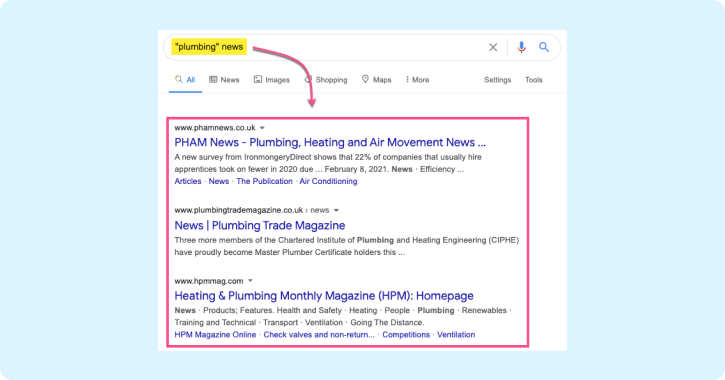If you’re looking to improve your website’s SEO, then you need to start by building links.
This link-generating guide will teach you everything you need about link-building and how it can help your SEO.
We’ll discuss the types of available links and how to acquire them. Plus, we’ll give you tips on making the most out of your link-building campaigns.
Thus, whether you’re a beginner or an experienced SEO expert, this guide has something for everyone!
By following the strategies outlined by our link-building agency, you’ll be well on your way to boosting your site’s authority and search engine rankings.
What is Link-Building in SEO?

Link-building for SEO is key to any website’s online success. It is a link-building guide that helps to build relationships with other websites by developing off-page backlink sources from one web page to another.
This link-building activity gradually affects the ranking of pages in the search engines’ indexes, providing greater and improved organic search engine visibility.
Link-building is essential in attaining good search results, as it helps to build optimized link equity and pass link juice to other web pages.
As link-building can ultimately improve page rank and visibility, many websites opt for an exclusive link-building strategy backed up by manual SEO link strategies like link audit, link disallowance, and link removal process to ensure top-tier rankings.
Why Is Link-Building Important for Search Engines?

Link-building is essential for driving website traffic and increasing search results pages’ visibility. It involves seeking out relevant websites and linking a page from one site to another through link-building tactics.
Link-building is a crucial element of any successful digital marketing strategy, as it enables site owners to build relationships with other websites with similar target audiences. The relationships are essential as they can help to improve visibility and drive more traffic to your site.
Additionally, link-building increases the credibility of a website by demonstrating that other reputable websites are linking to it. It helps to build trust with potential customers and encourages them to visit your website.
Link-building helps to improve SEO rankings by increasing the authority of a particular page. Higher rankings in search results pages can boost traffic, leads, and sales.
Ultimately, link-building helps improve click-through rates, establish trustworthiness, and strengthen domain authority, making it an indispensable asset for online success.
The Benefits of Link-Building for Your Website

Link-building is a critical component of SEO and can help to increase your website’s visibility in search results pages.
Some other benefits of link-building include:
1. Credibility
Link-building increases your website’s credibility by demonstrating that other reputable websites are linking to it.
It can boost trust with potential customers and encourage them to visit your site.
People who get to your page through a link are known as “referral traffic,” and this type of organic interest can be precious in enhancing your credibility, as potential customers rate their past experiences with others before making any decisions.
Linking is a vital aspect of any digital marketing strategy, as the correct use of it will help you grow your organic traffic in the long run.
2. Rankings
Creating resource pages with hyperlinks and anchor text that link to other sites is a great way to improve your website rankings.
This resource page strategy helps search engines like Google easily index your website, so they can see which websites you are connected to and rank your site accordingly.
Additionally, resource pages can help build your reputation as an authority in your industry by providing resourceful information to potential customers or clients.
Having strong links outside of Google, such as backlinks from other search engines like Bing or Yahoo, can significantly boost the credibility of your resource page and ultimately increase your chances of gaining higher rankings across other search engines.
3. Traffic
Generating links is a great way to generate traffic for your website. You can use many strategies, but an often overlooked method is creating a resource page on your website that other people in your industry can link to.
Not only does this generate incoming links, but it also helps you make yourself as an authority in the field.
Additionally, link reclamation is another effective way to generate more traffic by identifying lost and broken link opportunities and replacing those opportunities with active and relevant ones from your website. Links give you the immense potential to generate consistent levels of website traffic and help build a strong foundation for long-term success.
4. Revenue
Creating quality, link-worthy content is the key to attracting serious links that will generate revenue for your website.
Simply having an abundance of links or buying them isn’t enough – it’s essential to be aware that not all links are created equal. They won’t contribute any value to your website if they are irrelevant or valuable.
Make sure you’re engaging in activities that will attract organic links to your site to maximize the potential of link-building and boost your revenue.
5. Performance
Links are a fundamental piece of the puzzle regarding website performance. By using external links that point back to your website, you can significantly improve its visibility and accessibility, as well as its search rankings.
Additionally, inbound links from different websites are now being used by Google to measure the relevance of web pages for different search queries. It means that with strategic link-building, you can significantly increase your website’s organic growth and improve its ability to attract targeted visitors efficiently.
However, it is essential to note that quality is more beneficial than quantity when it comes to links – Google will eventually recognize those websites with bad or low-quality links and penalize them accordingly.
Investing in high-quality incoming links is crucial for achieving top performance on the web.
6. Partnerships
Link-building is a great marketing opportunity for businesses to capitalize on.
By strategically placing outbound links, you can bolster traffic to your website, help increase website authority, and gain influential partnerships.
It can be a beneficial way for modern business owners to extend the reach of their content and build mutually beneficial relationships in the process.
With a range of link-building resources, from blogging to online directories, there’s no shortage of opportunity when connecting with others – ultimately giving business owners access to profitable partners.
7. Authority
Links are handy when providing authority in a piece of content. When a link is provided from an authoritative source, this adds credibility to the content and can make it more trustworthy.
It also adds value for the reader since it allows them to explore additional resources related to the topic discussed in the original piece. Linking can also be used strategically to enhance search engine optimization since having an excellent external link profile will boost your position in search results pages.
It is essential to any successful content marketing strategy and should always be part of your plan.
8. Content Marketing
Links are an effective tool in content marketing, allowing businesses to better connect and engage with their target audience.
You can create an interconnected web of content that adds even more value to your customer experience by using links.
Whether it’s page links inside a website or external material that takes visitors offsite to third-party sources, all of these ‘connections’ enhance the authority of your domain, leading to a higher level of trust for your customers and potential customers.
Provide them with interesting, relevant material points, and soon you’ll see increased user engagement and potentially improved ranking from search engines.
In short, links provide a perfect way to get the most out of your content marketing campaigns.
Types of Links

Links play a significant role in the World Wide Web. Whether for a website, email, or other digital format, links connect resources and provide helpful navigation for users around the web.
Several links can be used in various settings; from hyperlinks to image maps, there’s something suitable for any situation.
Hyperlinks are the most common links pointing to other pages by clicking on the link itself. Image maps allow users to click on specific areas within an image, while download links enable visitors to save content such as a PDF document or audio file directly on their device.
In terms of appearance, in-text links exist when linking text is incorporated within a sentence, whereas button links pointing to other pages appear as buttons instead of words. Understanding the many links available pays off to ensure your content is fully connected through effective linking techniques.
Let’s discuss the main types of links:
1. Backlink

A link is called a backlink, as it originates from the website itself. Such types of links are vital to achieving high search ranking, as well as helping your site get more organic traffic.
Backlinks can also be received from guest posts by other bloggers who mention you or provide links to your website in their posts.
Backlinks are an essential part of any successful link-building campaign. Quality backlinks can make all the difference in a website’s success. The quality and position of a link are essential to effectively earning quality links from trustworthy sources and improving your domain authority.
Linking to quality external pages and content is one of the perfect ways to increase your website’s visibility and boost organic traffic.
Increasing quality backlinks can help build a solid online presence for your business or brand.
2. Internal links

Links are also used internally within a website to connect one page with another.
It can help navigate a website and provide users with further resources related to the content they are currently reading.
Internal links are an essential tool for SEO, helping search engines crawl your site more efficiently and index all its pages.
Internal links are essential to search engine visibility, as they give search engines a better idea of the structure, relevance, and relationships between content on your website.
By strategically linking from one page to another on your own domain, you can pass search engine authority from high-authority sites to others on your site – a compelling link-building advantage.
It helps search engines determine which pages are important, allowing search engine users to find them more easily.
Unlike external links from different websites, internal links can be user-generated or controlled by the site owner – giving you the freedom to use them with greater structure and intention.
3. Broken Links

Broken links are a common problem for websites, as they can cause a loss in traffic and search engine ranking.
When links are broken or not functioning correctly, this is known as a “broken link” – discovering these issues within your site can be an essential step to fixing them.
Tools such as Google Search Console and Webmaster Tools can help you identify broken links so that you can fix them before they become a problem.
Broken links harm your website’s visibility, making it difficult for users to explore your site and find the information or content they’re looking for.
By fixing those links in your content, you can help improve your website’s search engine ranking and increase traffic to your site.
Many tools are available to monitor those links so that you can be on top of issues as they arise.
To avoid having such links on your website, it’s essential to regularly check for any existing ones and fix them whenever possible.
4. Dofollow Links

Dofollow link is the standard type of link. They do not pass any “link juice,” or engine authority, to different websites when clicked on.
While all backlinks have value and can help improve your site’s SEO, it is generally best to focus on getting high-quality do follow links from reputable sources.
Some of the critical benefits of such links include:
- They help pass authority and trust from one site to another, improving your search ranking.
- They can help improve traffic to your website by helping users find relevant content more easily.
- By getting more high-quality backlinks from reputable sources, you can help build a solid and successful online presence for your business or brand.
Dofollow links are an essential part of any link-building campaign, as they can help improve your site’s search ranking and increase traffic to your website.
To get high-quality dofollow backlinks, a few key strategies can be effective, such as networking with different websites, guest posting on industry blogs, or creating quality content that others will want to link to.
By focusing on these strategies, you can improve your website’s visibility and boost its organic traffic for tremendous success online.
5. Nofollow Links

Nofollow links are a type of link that does not pass authority or trust to the linked-to site.
They are often used when linking to external websites, as they help protect against spammy or low-quality links that could harm your website’s search ranking.
While Nofollow links do not directly affect your search ranking, they can still be essential to your link-building strategy.
For example, if you are actively engaged in guest posting or networking with other sites, it makes sense to use some no follow links as well to help promote the content that you create.
Nofollow links should not be seen as a form of “link-building” and should not be actively pursued.
Instead, you can use nofollow links to help promote the content you create and improve the overall authority of your website.
6. External Links

External links are links that are from one website to another website.
External links can be essential to your link-building strategy, as they allow you to direct users to relevant, high-quality content on different websites.
By incorporating external links into your site’s content, you can help improve the user experience for your audience, which can also enhance your site’s search ranking.
You can use various strategies to build external links, such as networking with different websites, guest posting on industry blogs, or creating quality content that others will want to link to.
When used strategically and appropriately, the external link can effectively build authority and trust for your website, helping you improve your SERP results and drive more traffic to your site.
Overall, the external link can be essential to any effective link-building campaign. With the right strategies, you can use an external link to help boost your website’s visibility and increase its organic traffic over time.
7. Editorial Links

Editorial links are backlinks earned naturally as a result of creating high-quality content.
These types of links are often among the most valuable and essential for your website, as they indicate that different websites have taken notice and decided to link to your content on their own.
When building editorial links, it is critical to focus on quality over quantity.
By creating engaging and relevant content, you can help inhance your website’s SERPs and run more traffic to your site in the process.
You can use several strategies to build editorial links, such as participating in guest posting or networking with different websites.
However, one of the most effective strategies is creating high-quality content that others will likely want to link to.
In general, editorial links are essential to any successful link-building campaign.
8. Referring to Domains

Referring domains are an important component of SEO, as they build pages to link to the pages on your website.
Quality referring domains can give your pages credibility and organic reach, so it’s essential to focus your link-building efforts around seeking out useful pages that could bring value to the pages on your website.
Quality referring pages link relevant and authoritative pages, which can have a massive impact on helping you rank higher in SERPs. Investing time into researching and cultivating strong referring domains is essential for succeeding at SEO.
9. High-Quality Links
High-quality links can help boost a website’s ranking in SERPs, making it easier for users to find the content they need.
A reverse image search is one way to acquire high-quality links, as it allows you to quickly find out who is linking back to an image and then make contact with them.
Additionally, linking back to high authority sites such as relevant university websites or trusted news sources also helps build credibility and strengthen link-building strategies.
All of this, take into consideration, leads to significantly better SEO performance – well worth the time investment!
10. Relevant Links

Relevant links are paramount in any SEO strategy. Whether you have a blog, website, or both, they drive organic traffic and boost SEO ranking.
An SEO community can help build that relevance through link-building initiatives. Pages link to one another naturally when the content reflects similar subject matter and search terms – for example, fishing enthusiasts might link to pages about local tide times, fishing gear manufacturers, etc.
All carefully placed relevant links build trust with users, thus creating a better experience for them within your site or blog.
Common Link-Building Strategies

There are many different tactics that you can use to build links and improve your SEO.
Some of the most common link-building strategies include:
1. Direct or Email Outreach
Direct or email outreach is an effective option for building relationships with customers and other essential contacts.
Through direct engagement, businesses can discover new leads, better understand their target audience, and create meaningful connections with their network.
Making a thoughtful and personalized approach to reaching out can get you noticed and set the stage for future conversations that may lead to tremendous success.
As a business owner, you want to be sure that your message is professional yet engaging so that recipients understand the value behind your words.
In today’s predominately digital world, connecting directly with someone is often the best bet for long-term opportunities.
2. Content Marketing

Content marketing is a powerful and effective tool for growing an audience, increasing engagement, and, ultimately, driving sales.
With content marketing, the goal is to provide your target market with helpful, relevant, and consistent content that keeps them coming back for more.
By crafting informative and entertaining educational materials, you can deepen relationships with current customers while earning potential customers’ trust.
With the right content plan, you can rest assured that your efforts are likely to pay off – resulting in increased brand loyalty and profitable growth.
3. Blogging
Blogging is another effective way to build links and boost your SEO.
By publishing regular, high-quality content on your website or blog, you create more opportunities for others to create links to your site.
In addition, a blog post can help drive organic traffic, increase brand awareness, and establish credibility with potential customers with the right keyword research.
With the right mix of keyword research and links, you can also enhance your search ranking relatively quickly.
Regarding SEO and link-building, blogging is a strategy worth considering!
4. Guest Blogging

Guest blogging is a perfect way to increase your reach and visibility in your field. Not only does it help build credibility for you as an expert, but it gives you a great chance to collaborate with like-minded professionals from around the world and do the right keyword research.
Not to mention, guest posts on other people’s blogs can open up numerous networking opportunities.
With the right strategy and some effort, guest blogging can be a highly effective way of skyrocketing your blog – so start exploring today!
4. Creating How-to Guides or Tools
Creating how-to guides or tools is an essential and rewarding task that can lead to a much more informed, knowledgeable, and confident user base.
Before getting started, it’s essential to consider the target audience – who will read the guide or use the tool? What problem do you want to solve for them?
By truly understanding their needs and goals, it’s easier to craft an effective solution that resonates and makes a lasting impact. Once the guide or tool is created, promote it widely so everyone can take advantage of its benefits.
With the right approach, creating how-to guides or tools can be powerful in building a loyal user base that appreciates your work.
5. Resource Pages
Resource pages are a great way for site visitors to find helpful information and learn more about topics related to a product or service. With correctly categorized and tagged pages, web surfers can quickly locate the resources they seek, saving time while providing valuable data.
Resource pages aim to provide helpful content that educates, entertains, and encourages visitors to explore further on the website. Whether it’s advice articles, research reports, podcasts, or videos, websites should strive to develop content that resonates with their audience.
By having informative resource pages updated regularly with fresh material and easy-to-find search options, companies can create successful online experiences with outcomes as varied as increased sales or improved customer satisfaction.
6. Running Public Relations Campaigns
Running public relations campaigns is crucial for building links and improving your SEO. With the right approach, you can gain visibility and awareness by connecting with influencers and media outlets who share your values.
At the same time, you’ll also be building credibility with current and potential customers – all while expanding your reach across a wide range of networks.
With careful planning and consistent execution, you can build a successful PR campaign that results in more traffic, improved rankings, and tremendous success for your brand.
7. Broken Link-Building
Broken link-building is a staple tool used by many SEOs and marketers to increase website visibility.
By identifying broken links on your own website, professionals can reach out to the blog or webmaster of the page where the link appears, proposing their own piece/post as a replacement.
When implemented correctly, such link-building can benefit both parties: website visibility for you and filling in old content gaps for them.
Broken link-building isn’t simply about acquiring more backlinks – it’s also a great way to build relationships in the digital sphere and make your mark as an expert in your particular field.
Steps to Develop a Successful Link-Building Strategy

Developing a successful link-building strategy is an overwhelming task. It doesn’t have to be – with a little focus and patience; you are sure to create the best plan for your business.
Here are a few steps to have a successful link-building strategy:
1. Analyze Your Website with SEO Tools
Knowing and understanding the performance of your website is key to growing its online visibility.
SEO tools allow you to analyze your website to gain deeper insights and valuable information about how your users interact with it. Such tools can identify areas for improvement, track website metrics like pageviews or bounce rates, and help you optimize content for search engines.
With the help of SEO tools, you’ll have the upper hand in obtaining higher rankings on search results pages.
Additionally, by exploring internal linking opportunities, you can maximize visibility for key landing pages, allowing potential visitors to reach your most important content quickly.
Investing time into analyzing and understanding your website’s performance with SEO tools will undoubtedly increase the success of your online presence.
2. Research Your Competition
In addition to analyzing your website, it’s also essential to research your competition -particularly their link-building strategies.
By studying what works well for other websites in your industry, you can gain helpful insights into which tactics are most effective and how you can create your own successful strategy.
Whether leveraging broken link-building tactics or investing in influencer outreach campaigns, researching your competition will help you identify the best method for growing visibility and improving your SEO.
3. Reach Contributor Status on Industry Blogs
Contributing to industry blogs is a great way to build links and connect with other professionals in your field.
To do so, you’ll need to take the time to research which blogs have high domain authority and traffic – as well as which ones accept guest contributions.
Once you’ve identified these opportunities, make sure you publish valuable and engaging content that will be of value to the blog’s readers.
You can also rely on link-building services if you want a higher ranking. They will help you build links and improve your search rankings.
4. Identify Your Niche
Niche identification is the key to any successful marketing or SEO campaign.
Rather than trying to cover a wide range of topics and interests, it’s ultimately more effective to tailor your content for a specific audience instead.
By focusing on one particular area of interest, you’ll save time when creating content and increase the ROI you get from it.
Whether you’re a blogger, small business owner, consultant, or SEO expert – defining your unique niche is one of the best ways to ensure success in today’s digital world.
5. Identify Your Goals
Before you begin developing a link-building strategy, it’s essential to identify your goals.
Do you want to attract more website visitors? Increase sales or generate more leads? Or perhaps all of the above!
Regardless of your end goal, having a solid understanding of what you’d like to achieve will help guide your efforts in the right direction.
Some key considerations to keep in mind include identifying the best link-building tactics for your business and measuring and tracking your progress along the way.
6. Create Content that is Worth Linking to
Building links requires you to create valuable and engaging content worthy of sharing.
Whether writing a blog post, recording a video tutorial, or publishing an infographic – be sure to invest time and resources into producing the best possible content for your audience.
7. Stay on Top of Trends
It’s essential to stay on top of trends to adapt quickly and remain competitive.
Doing so can help companies identify areas of opportunity while also often inspiring new ideas that can be used to spur growth.
Similarly, staying informed with the latest industry developments can reduce risk or give you a jump on vulnerabilities as they’re revealed.
Several available resources provide up-to-date information and analysis on emerging trends in markets and consumers.
Subscribing to newsletters and monitoring industry news can be an excellent way for organizations to maximize efficiency by keeping abreast of the latest happenings.
8. Reach Out to Other Websites
Another great way to build links is by reaching out to relevant websites and making connections.
It can be done through guest blogging, contributing to forums, or emailing webmasters to build relationships.
9. Add Links to Your Website Naturally
In addition to reaching out to other websites and generating your backlinks via content creation, it’s also important to add links naturally to your site.
Adding links in the form of blog comments, social media posts, or forum discussions is a great way to build visibility through third-party platforms that may be outside of your website.
10. Mend Broken Backlinks
As you continually build and grow your site, broken backlinks will likely accrue over time.
It can happen for various reasons – from the website going offline to links being removed or changed.
While this may not seem a big deal, having a high number of broken backlinks can impact your search rankings.
To keep this from negatively affecting your site, monitoring and fixing any broken backlinks, you encounter proactively is essential.
It can be done by using tools such as Ahrefs or Moz that allow you to identify and repair broken links on your website quickly.
11. Promote Your Content
Last but certainly not least, promoting your content through various channels is essential.
Social media platforms like Facebook, Instagram, Twitter, and LinkedIn can be great tools for marketing your website and generating backlinks.
What are Some Common Link-Building Mistakes?
There are a few mistakes that are important to pay attention to. These mistakes include:
1. Not Diversifying Link Sources
To have higher rankings, it’s crucial to have various link sources rather than only a few.
2. Not Vetting Link Prospects
To positively impact your search rankings, it’s crucial to vet all of the link prospects you plan to reach out to.
3. Relying on Low-Quality Links
Low-quality links can harm your search rankings.
To avoid these common mistakes and build high-quality backlinks, it’s essential to monitor your backlink profile carefully and look for any areas that need improvement.
4. Not Building Relationships
To build high-quality backlinks, you must focus on building relationships with key players in your industry. It can be done by attending conferences and networking events or reaching out to others through email or social media.
5. Failing to Monitor Link Quality
Regularly monitoring the quality of your backlinks is vital to maintaining your search rankings. It can be done by using tools such as Ahrefs or Moz that allow you to identify and disavow low-quality links quickly.
Link-building is the Key to Success in SEO
Resource page link-building is essential to your strategy if you want to rank higher in search results pages and improve your SEO.
Following the tips in this guide, you can create a high-quality link to help your website climb the ranks. So what are you waiting for? Start building those links!

